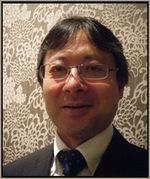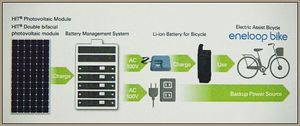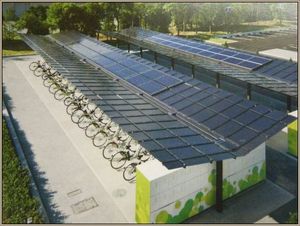Twenty-five years ago, a fresh graduate Hiroyuki Kuriyama joined Sanyo as a researcher, with revolutionary ideas about thin film silicon technology. He wanted to make the best electronic sensors and screens ever, but his boss and team helped design some of the most efficient solar cells instead - the Heterojunction with Intrinsic Thin layer (HIT) cell. Story and photos by Jeremy Torr.

Dr.Hiroyuki Kuriyama built his vision of photocell technology.
Singapore, 16 December 2010. In 1985, a fresh young graduate from Keio University in Japan joined electronics giant Sanyo. His job was to research and evaluate special kinds of silicon wafer construction for things like electronic sensors and displays and his name was Hiroyuki Kuriyama.
Sanyo was betting the wafers he was researching could be used in the coming generation of digital cameras, phones and mobile computers. For two years, Kuriyama worked in a small team, looking at thin film transistors to see what they could use them for.
“After a couple of years, our research turned into looking specifically at low-temperature thin film transistor technology,” he explains. Although still looking at the potential for cameras and sensors (even though a viable consumer product was still years off), Kuriyama and his fellow researchers at Sanyo had a hunch that this kind of specialized technology could also be used for the production of electricity by using sunlight: in a photo-voltaic solar cell.
Eight years of research later, and Sanyo had patented, perfected and made ready for production one of the best mass-produced solar energy convertors around – the Heterojunction with Intrinsic Thin layer (HIT) cell. “I guess we had some foresight that this was going to be a good technology,” admits Kuriyama modestly, “although at the time we were still thinking of it for sensors and displays. We thought solar was going to get bigger, but the various governments had no interest. They were giving no incentives (to research) at all, unlike today.”
Luckily his boss, Yukinori Kuwano, had great visions of the role solar power would likely play one day in the future. “He wanted to help ensure the future of the world’s energy, even back then, two decades ago,” explains Kuriyama. “He had this vision of covering the deserts with our solar cells and linking them to a grid that could power the world. He was a big influence on me.”

Sanyo's HIT photovoltaic cell uses custom thin crystal silicon wafer construction to boost efficiency up to around 20 percent.
The thin-film technology expertise gained allowed Sanyo's research team to go on to develop the HIT cell that is, Kuriyama asserts, capable of up to 25 percent solar energy conversion efficiency in its next iteration. Even the very best custom-built cells made today only manage about 40 percent efficiency. But the market is very different now, says Kuriyama, and Sanyo is gearing up to react ahead of the curve - like it did back in 1995.
“Solar cells are now not a special product at all; they are almost a commodity,” he explains. China is producing them by the boatload, the cost is coming down and new houses can be fitted with them as a matter of course. “The big difference is that anybody can make (cells) today, but being able to make the whole system efficient is much harder,” he explains.
So as well as making efficient HIT cells, Sanyo is concentrating on maximizing the way their power output is used. Calling on its expertise with batteries (Eneloop) control systems (EMS management systems), LED lighting and more it is concentrating on the integration of its products into an overall efficient operating system.

The auto bicycle charging system is just one of the smart features at Sanyo's new demonstration Green Energy Park.
“The real expertise will not be in the hardware from now on, but it will be in the control software, in the total solutions companies can provide. That’s where we are looking,” he says. He says that Sanyo aims to be the equivalent in solar installations of IBM in Smart Grids.
Today with a couple more degrees, a Ph.D and an MBA to his credit, Kuriyama is President of Sanyo Energy Systems & Solution Sales Asia Pacific, no longer a white-coat in the research lab. He is the man with his finger on the pulse of solar power systems across Asia.
“Of course I don’t spend much time in the lab now; my job is to make sure we sell installations. But I know we are looking at other technologies – things like new kinds of batteries that can help local systems be more efficient,” he says.

The auto bicycle charging system is just one of the smart features at the Sanyo Green Energy Park.
As he explains the latest technology and controls, he uses a simple example to show how an intelligent local system can save significant amounts of power, leading to reduced CO2 emissions. At the recently opened Sanyo Green Energy Park in Kasai, Japan, there are of course parking lots for cars. But there is also a smart bicycle shed. The bicycles are Sanyo Eneloop electric bikes, and they are parked under a large roof to stop them being rained on – but at the same time charge the batteries. The solar panels on the roof make electricity which is then controlled by smart systems to trickle charge all the parked bikes so they are full of juice when the workers knock off. “It’s just one thing we have done at the Green Park,” he smiles.
Thanks to Sanyo's pioneering solar cells, battery storage and smart control systems, the bike sheds use no commercial power at all to charge the bikes, even on rainy days or at night. One great green example.
